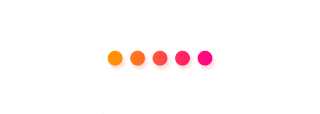


1. Key Findings
2. Introduction
2.1. Executive Summery
2.2. Regional Snapshot
2.3. Market Scope
2.4. Market Definition
3. Across The Globe
3.1. Factors Affecting End Use Industries
3.2. Upcoming Opportunities
3.3. Market Dynamics
3.3.1. Ongoing Market Trends
3.3.2. Growth Driving Factors
3.3.3. Restraining Factors
3.4. Value Chain Analysis
3.4.1. List of Manufacturers
3.4.2. List of Distributors/Suppliers
3.5. PORTER’s & PESTLE Analysis
3.6. Key Developments
3.7. Key Industry Patents
4. Global Cut Resistant Gloves Market
Overview, By Type
4.1. Market Size (US$ Mn) Analysis, 2019
– 2034
4.2. Market Share (%) Analysis (2023 vs
204), Y-o-Y Growth (%) Analysis (2023-2034) & Market Attractiveness
Analysis (2024-2034)
4.3. Market Absolute $ Opportunity
Analysis, 2019 – 2034
4.3.1.
Mono-sex
4.3.2. Unisex
5. Global Cut Resistant Gloves Market
Overview, By Industry
5.1. Market Size (US$ Mn) Analysis, 2019
– 2034
5.2. Market Share (%) Analysis (2023 vs
204), Y-o-Y Growth (%) Analysis (2023-2034) & Market Attractiveness
Analysis (2024-2034)
5.3. Market Absolute $ Opportunity
Analysis, 2019 – 2034
5.3.1.
Construction
5.3.2.
Machinery & Equipment
5.3.3.
Manufacturing & Fabrication
5.3.4.
Mining
5.3.5.
Other Industries
6. Global Cut Resistant Gloves Market
Overview, By Cutting Force
6.1. Market Size (US$ Mn) Analysis, 2019
– 2034
6.2. Market Share (%) Analysis (2023 vs
204), Y-o-Y Growth (%) Analysis (2023-2034) & Market Attractiveness
Analysis (2024-2034)
6.3. Market Absolute $ Opportunity
Analysis, 2019 – 2034
6.3.1.
Up to 2N
6.3.2.
2 – 5N
6.3.3.
5 – 10N
6.3.4.
10 – 15N
6.3.5.
15 – 22N
6.3.6.
22 – 30N
6.3.7.
Above 30N
7. Global Cut Resistant Gloves Market
Overview, By Material
7.1. Market Size (US$ Mn) Analysis, 2019
– 2034
7.2. Market Share (%) Analysis (2023 vs
204), Y-o-Y Growth (%) Analysis (2023-2034) & Market Attractiveness
Analysis (2024-2034)
7.3. Market Absolute $ Opportunity
Analysis, 2019 – 2034
7.3.1.
Ultra-High-Molecular-Weight
Polyethylene (UHMWPE) Yarn
7.3.2.
Para-Aramid Yarn
7.3.3.
Metal Mesh
7.3.4.
Spectra Fiber
7.3.5.
Dyneema
8. Global Cut Resistant Gloves Market
Overview, By Region
8.1.
Market
Size (US$ Mn) Analysis, 2019 – 2034
8.2.
Market
Share (%) Analysis (2023 vs 204), Y-o-Y Growth (%) Analysis (2023-2034) &
Market Attractiveness Analysis (2024-2034)
8.3.
Market
Absolute $ Opportunity Analysis, 2019 – 2034
8.3.1.
North
America
8.3.2.
Europe
8.3.3.
Asia
Pacific
8.3.4.
Middle
East & Africa
8.3.5.
South
America
9. North America Cut Resistant Gloves
Market Overview
9.1. Market Size (US$ Mn) Analysis, 2019
– 2034
9.2. Market Share (%) Analysis (2023 vs
204), Y-o-Y Growth (%) Analysis (2023-2034) & Market Attractiveness
Analysis (2024-2034)
9.3. Market Absolute $ Opportunity
Analysis, 2019 – 2034
9.3.1.By Country
9.3.1.1.
U.S.
9.3.1.2.
Canada
9.3.1.3.
Mexico
9.3.2.
By
Type
9.3.3.
By
Industry
9.3.4.
By
Cutting Force
9.3.5.
By
Material
10. Europe Cut Resistant Gloves Market
Overview
10.1. Market Size (US$ Mn) Analysis, 2019
– 2034
10.2. Market Share (%) Analysis (2023 vs
204), Y-o-Y Growth (%) Analysis (2023-2034) & Market Attractiveness
Analysis (2024-2034)
10.3. Market Absolute $ Opportunity
Analysis, 2019 – 2034
10.3.1. By Country
10.3.1.1.
UK
10.3.1.2.
Italy
10.3.1.3.
Spain
10.3.1.4.
Germany
10.3.1.5.
France
10.3.1.6.
Rest of Europe
10.3.2. By Type
10.3.3. By Industry
10.3.4. By Cutting Force
10.3.5. By Material
11. Asia Pacific Cut Resistant Gloves
Market Overview
11.1. Market Size (US$ Mn) Analysis, 2019
– 2034
11.2. Market Share (%) Analysis (2023 vs 204),
Y-o-Y Growth (%) Analysis (2023-2034) & Market Attractiveness Analysis
(2024-2034)
11.3. Market Absolute $ Opportunity
Analysis, 2019 – 2034
11.3.1. By Country
11.3.1.1.
China
11.3.1.2.
Japan
11.3.1.3.
India
11.3.1.4.
South Korea
11.3.1.5.
Rest of Asia Pacific
11.3.2. By Type
11.3.3. By Industry
11.3.4. By Cutting Force
11.3.5. By Material
12. Middle East & Africa Cut
Resistant Gloves Market Overview
12.1. Market Size (US$ Mn) Analysis, 2019
– 2034
12.2. Market Share (%) Analysis (2023 vs
204), Y-o-Y Growth (%) Analysis (2023-2034) & Market Attractiveness
Analysis (2024-2034)
12.3. Market Absolute $ Opportunity
Analysis, 2019 – 2034
12.3.1. By Country
12.3.1.1.
GCC
12.3.1.2.
South Africa
12.3.1.3.
Rest of Middle East & Africa
12.3.2. By Type
12.3.3. By Industry
12.3.4. By Cutting Force
12.3.5. By Material
13. South America Cut Resistant Gloves
Market Overview
13.1. Market Size (US$ Mn) Analysis, 2019
– 2034
13.2. Market Share (%) Analysis (2023 vs
204), Y-o-Y Growth (%) Analysis (2023-2034) & Market Attractiveness
Analysis (2024-2034)
13.3. Market Absolute $ Opportunity
Analysis, 2019 – 2034
13.3.1. By Country
13.3.1.1.
Brazil
13.3.1.2.
Argentina
13.3.1.3.
Rest of South America
13.3.2. By Type
13.3.3. By Industry
13.3.4. By Cutting Force
13.3.5. By Material
14. Country Wise Market Analysis
14.1. Growth Comparison By Key Countries
15. Competitive Landscape
15.1. Market Share (%) Analysis, By Top
Players
15.2. Maret Structure Analysis, By Tier I
& II Companies
16. Company Profiles
16.1. 3M (US)
16.1.1. Company Overview
16.1.2. Business Segments
16.1.3. Financial Insights
16.1.4. Key Business Aspects (Noise
Analysis)
16.2. ANSELL LTD (Australia)
16.3. Top Glove Corporation Bhd (Malaysia)
16.4. Honeywell International Inc (US)
16.5. Hartalega Holdings Berhad (Malaysia)
16.6. Kossan Rubber Industries Bhd
(Malaysia)
16.7. W.W. Grainger, Inc (US)
16.8. Supermax Corporation Berhad
(Malaysia)
16.9. Protective Industrial Products, Inc.
(Australian)
16.10. KCWW (US)
17. Analysis & Recommendations
17.1. Targeting Segment
17.2. Targeting Region
17.3. Market Approach
18. Research Methodology
19. Disclaimer
Your experience on this site will be improved by allowing cookies.